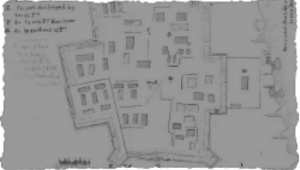
The Battle of
Te Ruapekapeka



Ruapekapeka was the site of the last battle of the Northern War, where about 400 Ngāpuhi and Ngāti Hine warriors stood against a combined British force of 1600. The warriors built a pā (fortification), which was cleverly adapted to the methods and armaments of European warfare. However, they were outnumbered four to one and they lacked heavy artillery. The British did not. For days, they blasted the pā with canons, howitzers, mortars, and rockets, eventually breaching the massive timber palisades.

It seems the defenders were caught by surprise when a party of soldiers stormed the breach. Most of the warriors were not actually inside the pā at the time – they were among the trees at the rear, possibly setting up a trap. There was a fierce and bloody fight. A foolhardy group of soldiers rushed out the back of the pā, to be fired upon by warriors perched in the trees and crouching behind strategically fallen logs. This is how the British suffered most of their casualties – 12 killed and 29 wounded.
After engaging the soldiers for several hours, the warriors withdrew into the bush. It was no rout. Ruapekapeka was not a besieged castle, full of terrified women and children to be defended at any cost. Kawiti chose a location that had no strategic value – there was no particular reason to hold that particular ridge. The purpose was simple: draw the enemy in, cause them a great deal of trouble, and leave when necessary. An orderly withdrawal had probably been in progress for several days before the British entered the pā.
It is difficult, then, to talk of victory and defeat. The British had taken (or were given) the enemy position, but what value was an empty pā in the middle of nowhere?











